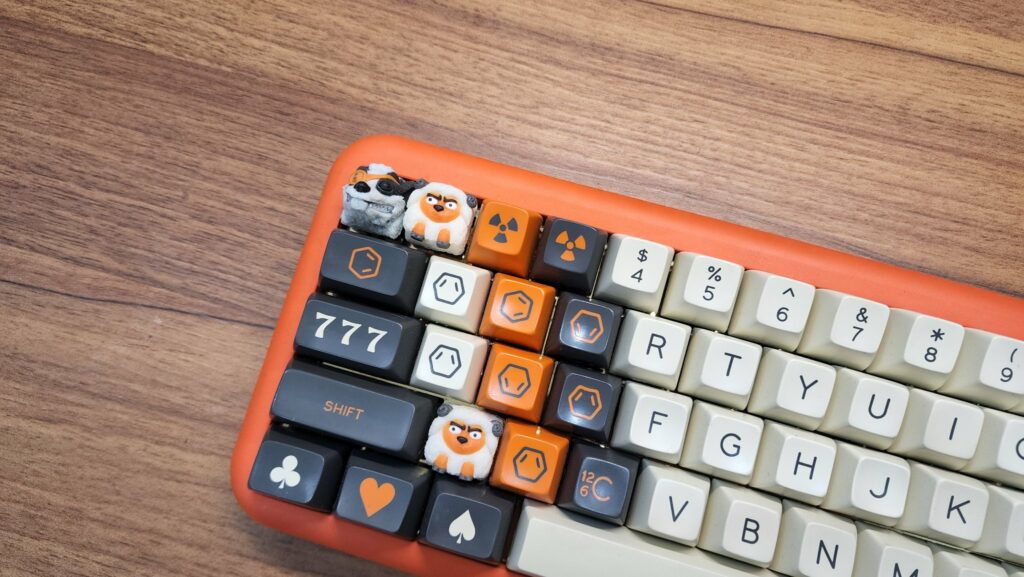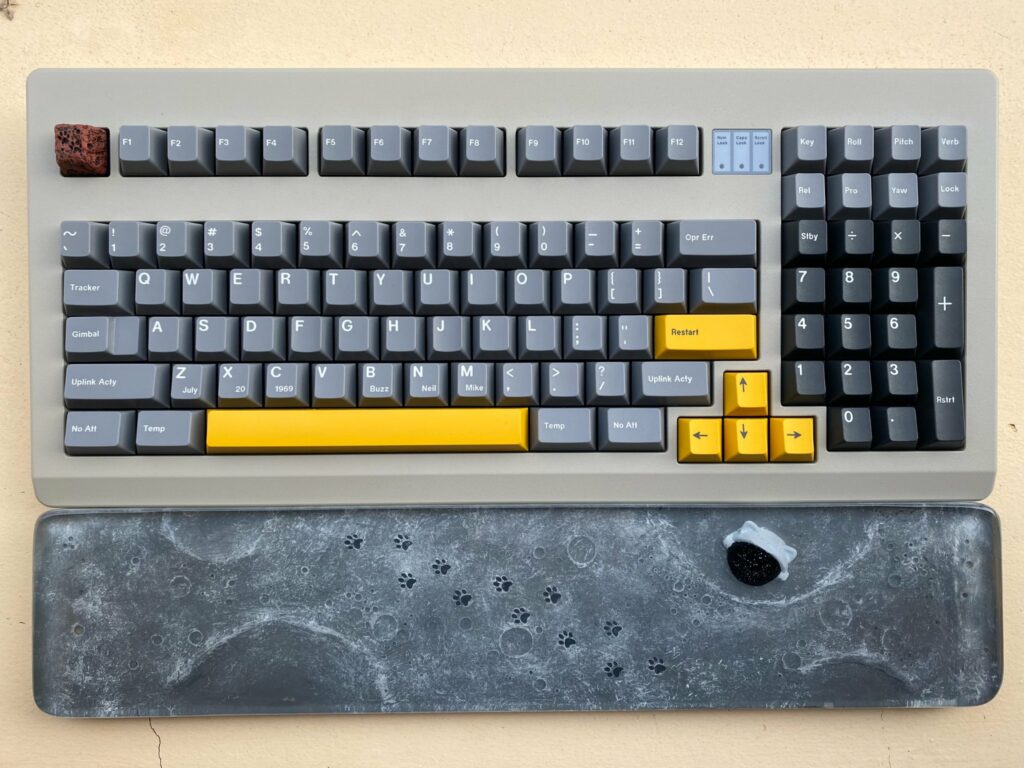I use mechanical keyboards frequently. I’m almost addicted to them. Since learning about mechanical keyboards, I’ve been doing study on all of its many components, including switches, casings, stabilizers, and keycaps.
When I complain to family and friends about mechanical keyboards, they always seem to have the same issue: Why do mechanical keyboards cost so much?
Mechanical keyboards can cost up to ten times as much as a standard keyboard because of all the additional parts and work needed to make them. There is a mechanical switch below each key. The switches are mostly to blame for mechanical keyboards’ higher price. Although they might be expensive, mechanical keyboards costing less than $30 are also an option.

Rubber Dome (Normal) Keyboards
The majority of individuals use rubber dome keyboards every day at home and at work. The majority of regular, non-mechanical keyboards are constructed of it. Most individuals will be utilizing a rubber dome keyboard if you visit an office.
Rubber dome keyboards are cheap to produce and easy to put together. On top of a membrane sheet, rubber keys are attached to them. On top of the rubber dome are the keycaps.
The low price of this keyboard is one of its advantages. Rubber dome keyboards aren’t really enjoyable to use, in my opinion. When pushed, the keys often seem mushy and unreliable. The point at which the key registers, or the actuation point, is never in the same location. It can be hard to use and can result in erroneous typing.
Rubber dome keyboards also have a problem where the keys don’t register if more than one is pressed simultaneously. Therefore, if you play a game and need to press a lot of keys quickly or if you type quickly, this type of keyboard might not correctly record your inputs.
We strongly advise swapping out your rubber dome keyboard for a mechanical one if you have the time and resources to do so.
Scissor Switch Keyboards
Keyboards with scissor switches are another common design. Typically, laptops have these. Because there are separate switches, the scissor switch is akin to a mechanical keyboard, yet the overall feel is very different.
Scissor switches have an extremely tiny, flat, and thin profile. They are utilized in laptop keyboards because of how portable they are. In terms of aesthetics, the design is likewise quite thin and lovely.
However, these scissor switch keyboards are a headache in terms of usefulness and ergonomics. They don’t feel good in your palms, offer no support, and bottom out easily without shielding your hands.
Scissor switches do not provide the optimum user experience due to their flat shape. When a key is pushed, the flat switches give very little support and no tactile input. Your risk of developing repetitive strain injuries and conditions like carpal tunnel syndrome rises as a result of the keyboard’s design.
Additionally, there is little diversity or modification in the way that scissor switches feel, making them all quite similar. We advise purchasing a mechanical keyboard to use with your laptop if you already have a laptop with scissor switches and don’t like the way it feels.
What Makes Mechanical Keyboards More Expensive?
Mechanical keyboards have a more comfortable feel than rubber dome and scissor switch keyboards, but their biggest disadvantage is that they are typically more costly. There are a few causes for this additional cost, but the switches are the primary culprit.
The reason why keyboards are referred to be “mechanical” is because each key has a mechanical switch underneath it. Because each of these switches operates independently of the others, typing accuracy and consistency are much improved.
Hundreds of various switch types are furthermore accessible. You can order a switch with a low actuation force if you type extremely precisely so that you don’t have to push as hard. If, on the other hand, you type with your fingers slamming into the keyboards, invest in a switch with a high actuation force so that your fingertips are better protected.
When it comes to switch types, there are three basic divisions: Tactile, Linear, and Clicky. When a key is pressed, tactile switches provide a little bump that detects the keystroke and provides feedback to the user. Our preferred switch is for office workers and others who use a keyboard primarily for typing. The most enjoyable typing experience may be had with this kind of switch since it is pretty silent.
Linear switches only produce a smooth, flat keystroke with no bump at all. Since linears are the easiest to quickly press in sequence, gamers mostly employ them. Gamers are frequently distracted by the tactile bump from tactile switches, which might ruin their gaming experience.
The majority of people imagine mechanical keyboards when they think of clicky switches. These switch kinds are ostentatious and noisy. They have a tactile-like sensation, but when pressed, they emit a loud click instead. Although we advise against using them in public areas, they are really satisfying to use. The loud clicks are really entertaining.
As you can see, mechanical keyboards allow for a great deal of switch type customization, allowing you to determine exactly what enhances your typing experience. No of the switch type, the majority of mechanical keyboard switches promise 50+ million keystrokes before they begin to fail. This implies that you can use your keyboard for many years before the switches need to be changed.
N-key rollover, a characteristic of mechanical keyboards, is an additional beneficial function. This describes how many keys may be pushed simultaneously before they cease registering. Due to the separate switch mechanism, the majority of mechanical keyboards perform remarkably well while numerous keys are pushed. When two keys are pushed simultaneously, much alone six or more, rubber dome keyboards typically don’t register the action.

What are the prices of mechanical keyboards?
The cost of a mechanical keyboard might vary greatly. The Massdrop CTRL keyboard is one of the priciest keyboards; it costs around $200. Low-end mechanical keyboards, like the Redragon K552, often cost under $30. When you compare the costly and inexpensive mechanical keyboards, there are significant disparities in quality. For a decent mechanical keyboard, the price is usually around $80.
So why is the pricing range so wide? In fact, the more costly mechanical keyboards are often composed of superior materials and last longer. The table below illustrates some of the most significant variations in the features and parts.
The cost of a mechanical keyboard might vary greatly. The Massdrop CTRL keyboard is one of the priciest keyboards; it costs around $200. Low-end mechanical keyboards, like the Redragon K552, often cost under $30. When you compare the costly and inexpensive mechanical keyboards, there are significant disparities in quality. For a nice mechanical keyboard, the price is generally about $80.
So why is the pricing range so wide? In fact, the more costly mechanical keyboards are often composed of superior materials and last longer. The table below illustrates some of the most significant variations in the features and parts.
Conclusion
We looked at what distinguishes mechanical keyboards from rubber dome and scissor switch keyboards in terms of price. N-key rollover, independent switch design, and improved quality and durability are a few of the highlights. We also contrasted the features of premium and low-cost mechanical keyboards, finding that the former provided a better user experience and higher level of quality.
Although mechanical keyboards may be more expensive than other types of keyboards, we strongly suggest giving one a try. We think the feel will wow you and make you want to try them out for yourself. For a high-quality, reasonably priced keyboard, we suggest taking a look at the HyperX Alloy Origins Core. One is available on Amazon for a fairly good price. This keyboard is really popular with us, and we believe you will like using it.
